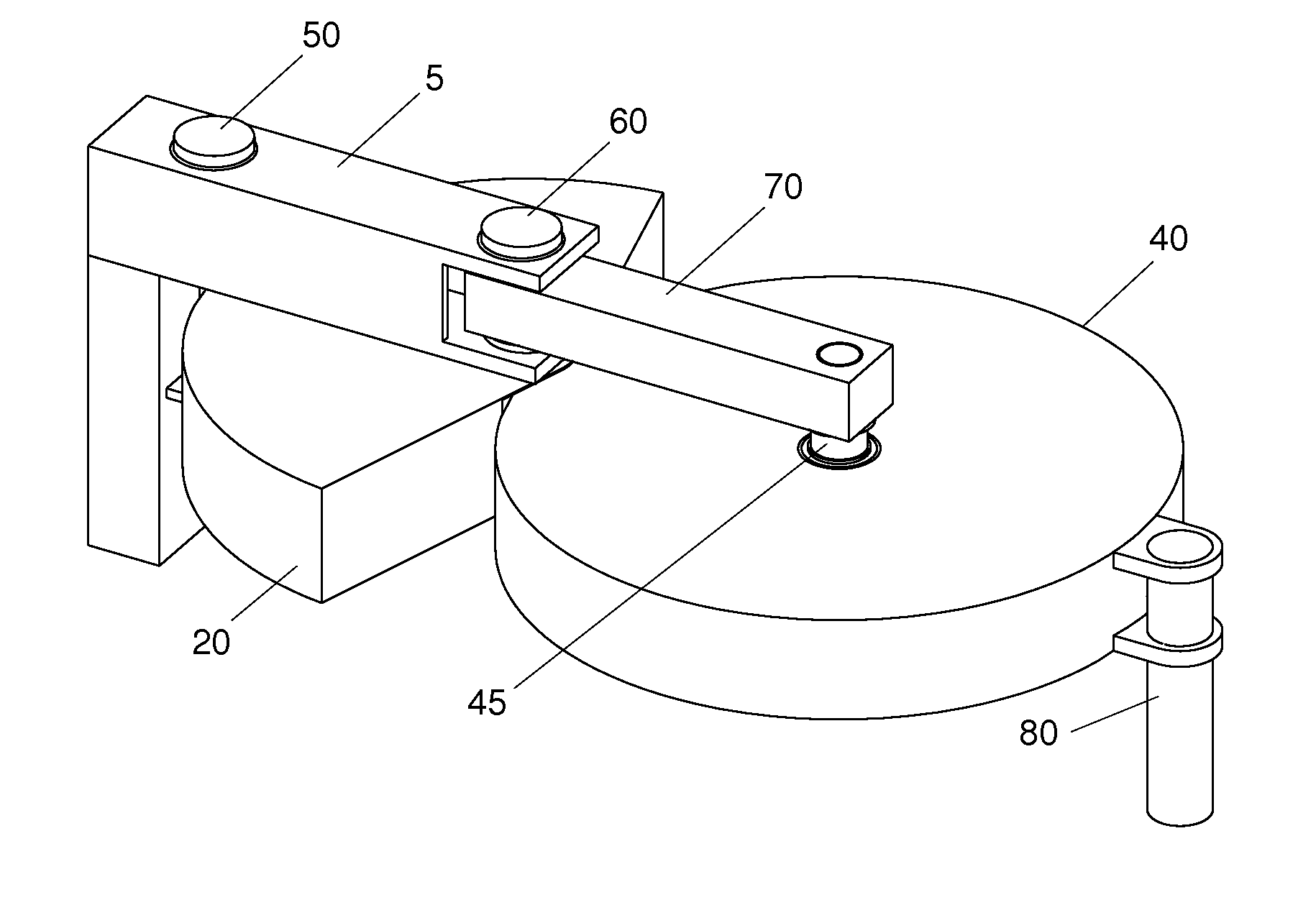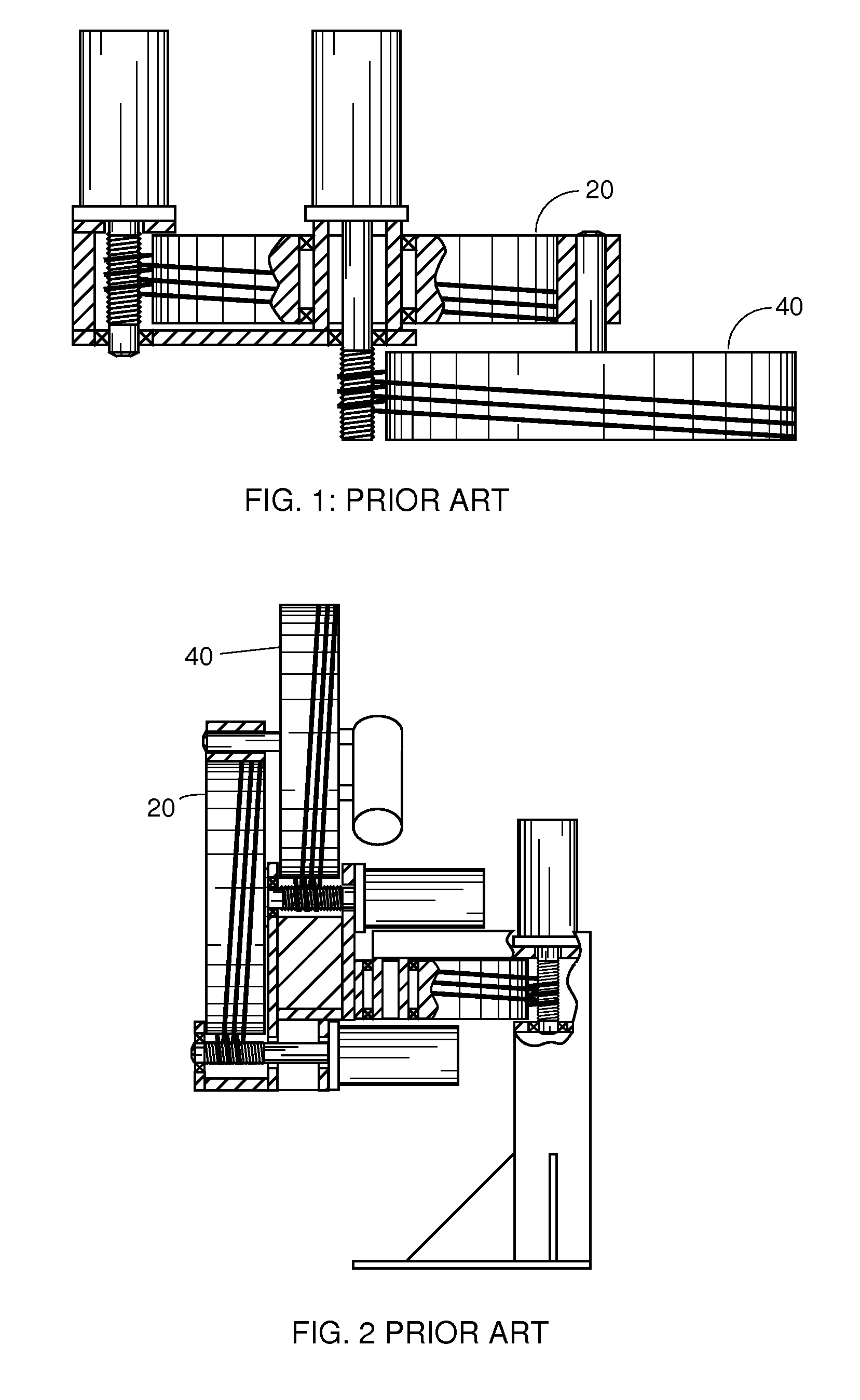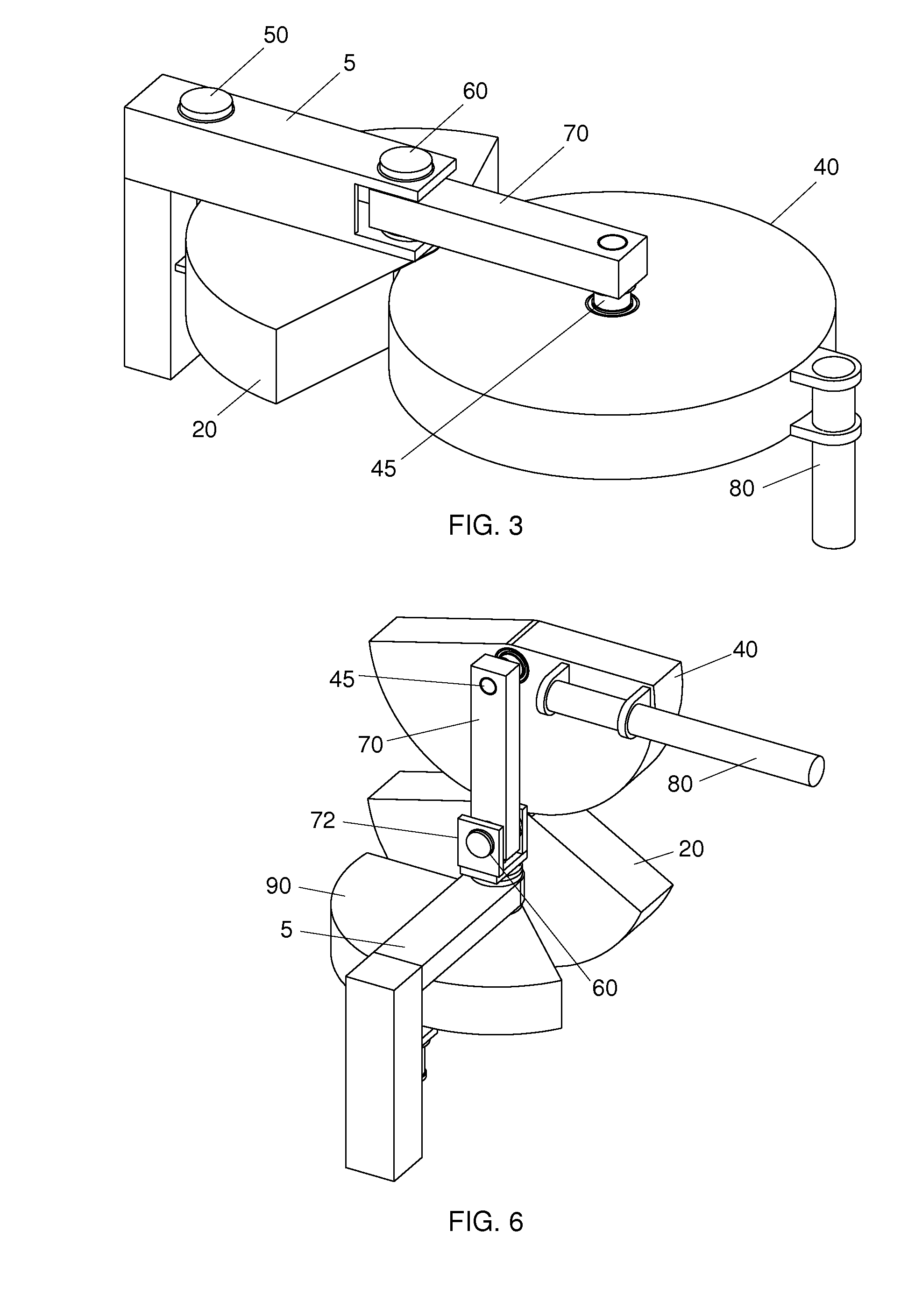Robotic manipulator using rotary drives
- Summary
- Abstract
- Description
- Claims
- Application Information
AI Technical Summary
Benefits of technology
Problems solved by technology
Method used
Image
Examples
Embodiment Construction
[0039]The construction and benefits of a two degree-of-freedom manipulator as shown in FIG. 1 is described in related U.S. Pat. No. 5,429,015. With its scarcity and simplicity of components, this 2 degree-of-freedom mechanism offers high performance and economical construction. The motors do not move relative to the motion of the driven drums, so there is no performance penalty for using large motors to achieve rapid accelerations. No belts, chains, or linkages are required to transmit motor torques to the moving members. No additional transmission reduction mechanism is required. The short mechanical distance from motor to the controlled output point allows higher accelerations, more accurate positioning, and more accurate force and torque than competing designs. This design is well suited for applications that require fast and accurate planar motion, as in a SCARA (selective compliance articulated robot arm) industrial robot.
[0040]FIGS. 3-5 show a selective compliance articulated ...
PUM
 Login to View More
Login to View More Abstract
Description
Claims
Application Information
 Login to View More
Login to View More - R&D
- Intellectual Property
- Life Sciences
- Materials
- Tech Scout
- Unparalleled Data Quality
- Higher Quality Content
- 60% Fewer Hallucinations
Browse by: Latest US Patents, China's latest patents, Technical Efficacy Thesaurus, Application Domain, Technology Topic, Popular Technical Reports.
© 2025 PatSnap. All rights reserved.Legal|Privacy policy|Modern Slavery Act Transparency Statement|Sitemap|About US| Contact US: help@patsnap.com



